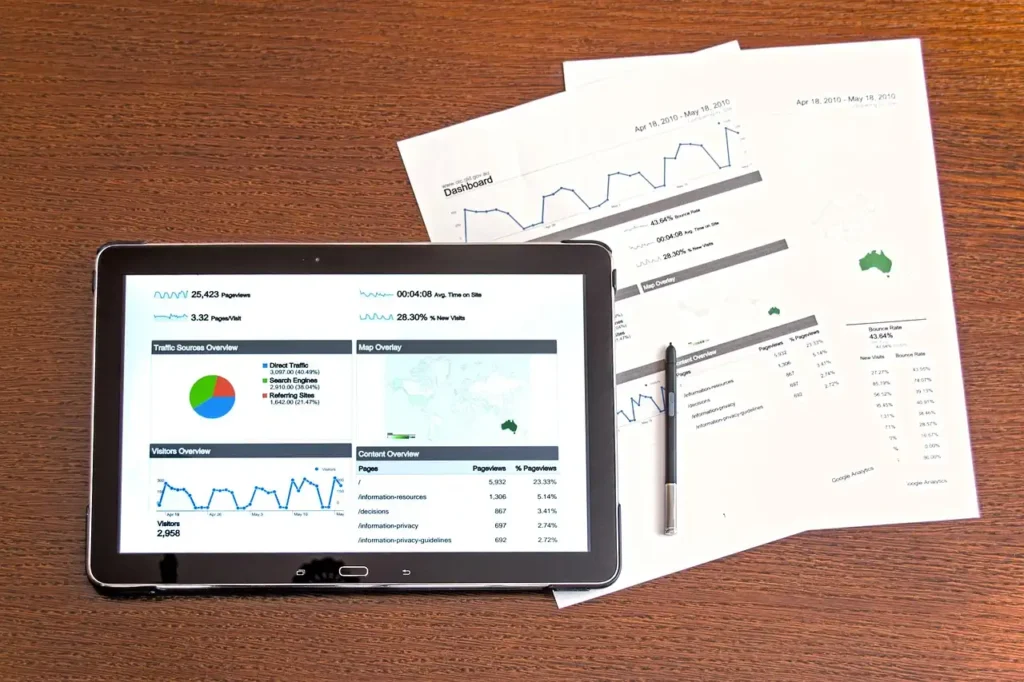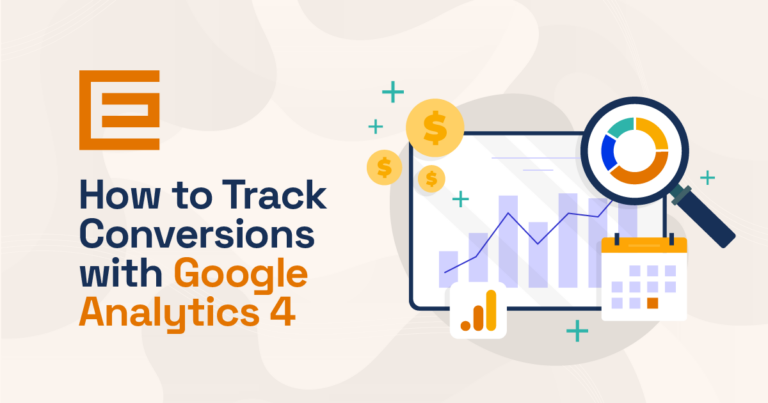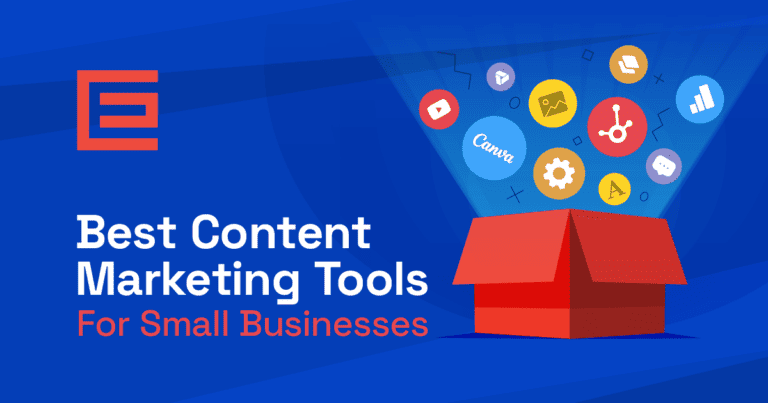Website promotion and traffic monitoring are more crucial than ever before. In this article, we will explore why these practices are essential for the success of your website.
In a digital world saturated with websites, standing out from the crowd is a challenging task. Without effective website promotion, your online presence may go unnoticed, leaving potential customers unaware of your products or services. Additionally, traffic monitoring allows you to gain valuable insights into your website’s performance and identify areas for improvement. By understanding your audience’s behavior and preferences, you can tailor your strategies to attract and retain more visitors.
Website promotion and traffic monitoring will continue to play a vital role in driving online success. Whether you are a business owner, blogger, or content creator, investing time and resources into these practices will yield tangible results. So, let’s dive deeper into the importance of website promotion and traffic monitoring and discover how they can elevate your online presence.

- 1How Important is Website Promotion and Traffic Monitoring? TL;DR
- 2What is Website Promotion?
- 3Key Strategies in Website Promotion
- 4Traffic Monitoring: More Than Just Numbers
- 5Why Monitoring Website Traffic is Essential
- 6Diving Deep into Analytics
- 7Optimizing User Experience (UX)
- 8Conversion Rate Optimization (CRO) and Its Link to Traffic Monitoring
- 9The Role of Backlinks in Promotion and Monitoring
- 10How Traffic Data Can Predict Future Trends in Website Promotion and Monitoring
- 11Dealing with Negative Feedback or Press
- 12Budgeting for Promotion and Monitoring: Getting the Best Bang for Your Buck
- 13Conclusion
How Important is Website Promotion and Traffic Monitoring? TL;DR
Website promotion and traffic monitoring are crucial for the success of any website. Promoting your website ensures that it reaches a wider audience and increases its online presence. Monitoring website traffic allows you to gather valuable data and insights about user behavior and preferences. Overall, website promotion and traffic monitoring are essential for maximizing the visibility and success of your online presence.
What is Website Promotion?
Website promotion is the process of increasing the visibility and online presence of a website through marketing strategies and techniques. It’s important because it allows businesses to attract more visitors and achieve their goals.
Every online business should prioritize website promotion to effectively compete in the online marketplace, increase visibility, and attract targeted traffic.
Key Strategies in Website Promotion
There are several key strategies that can be used to effectively promote a website and maximize its reach. Let’s dive into each of these strategies and explore how they can contribute to successful website promotion.
SEO: The Backbone of Organic Reach
By optimizing your website with relevant keywords, properly structuring your content, and building high-quality backlinks, you can significantly improve your search engine rankings.
On-page optimization ensures that search engines understand what your website is about, while link building establishes credibility and authority. This results in higher visibility on search engine results pages and increased organic traffic.
What sets SEO apart from paid advertising is its long-term benefits. While paid advertising delivers immediate traffic, SEO generates continuous growth in website traffic over time. By investing in SEO strategies, businesses can establish a sustainable source of organic traffic and attract potential customers who are actively searching for products or services.
Paid Advertising: Immediate Results and Targeting Precision
Paid advertising is an essential tool for website promotion, offering immediate results and precise targeting capabilities. Unlike SEO, paid ads deliver instant traffic to your website, helping you quickly reach your target audience.
Platforms like Google Ads and social media ads, such as Facebook Ads, enable businesses to create highly targeted campaigns. With options to select specific demographics, interests, and locations, you can ensure your ads are seen by the right people.
Moreover, paid advertising allows you to track and measure the effectiveness of your campaigns. You can monitor click-through rates, conversions, and return on investment, helping you optimize your strategies for maximum results.
According to recent data, spending on social media ads has risen by 62% over the past five years, demonstrating their effectiveness in driving website traffic. Additionally, Google AdWords and Facebook Ads have proven to be powerful tools in generating qualified leads and converting visitors into customers.
Content Marketing: Building Authority and Trust
Content marketing plays a crucial role in website promotion, particularly in building authority and trust. When businesses consistently create and publish high-quality, relevant content, they establish themselves as industry leaders and experts. This helps to build trust among their target audience, who perceive them as reliable sources of information.
By regularly producing valuable content, businesses can also increase their brand awareness and visibility. When web users find helpful and engaging content on a website, they are more likely to share it with others, thus generating more web traffic and potential customers.
Statistics show that content marketing can be highly effective in driving results. Businesses that prioritize content marketing receive 3x more leads and 6x higher conversion rates compared to those who do not. Moreover, content marketing costs 62% less than traditional marketing strategies while generating 3x more leads.
Social Media Promotion: Harnessing The Power of Viral Content
In today’s digital landscape, social media promotion plays a crucial role in driving website traffic. By leveraging the power of viral content, businesses can increase brand recognition and indirectly assist with search engine promotion.

Creating groups, profiles, and video channels on social networks allows businesses to directly engage with their target audience and build a loyal following. When users come across engaging and shareable content, they are more likely to share it with their own network, resulting in increased website traffic.
However, it’s not enough to just create great content. It’s equally important to monitor trends, learn new tools, and track site performance to stay ahead of the competition. By keeping a close eye on analytics, businesses can identify what works and what doesn’t, and make necessary adjustments to maximize the impact of their social media promotion efforts.
Traffic Monitoring: More Than Just Numbers
Analytics and tracking tools go beyond just providing numbers and statistics.
What Does it Mean to Monitor Website Traffic?
Monitoring website traffic involves reviewing and analyzing the flow of visitors to a website to evaluate its user traffic and overall performance. By assessing website traffic, businesses can gain valuable insights into the effectiveness of their online presence, marketing strategies, and user experience.
To monitor website traffic, servers compile data from user interactions and record information such as the number of visitors, pages viewed, and time spent on the site. This data is usually collected through server logs or by using analytics tools like Google Analytics.

Monitoring website traffic is crucial for businesses as it helps them understand their target audience, determine the success of their marketing channels, and identify areas for improvement. By analyzing website traffic, businesses can identify popular content, relevant keywords, and opportunities to attract more potential customers.
Regularly monitoring and analyzing website traffic allows businesses to make informed decisions about their online strategy, refine their SEO strategies, and increase organic traffic. It is a powerful marketing tool that can turn visitors into customers and help businesses achieve their primary goal of maximizing website traffic and conversions.
Tools of the Trade: Popular Platforms For Traffic Monitoring
When it comes to monitoring website traffic, there are several popular platforms that businesses can use to gain valuable insights.
- One of the most widely used platforms is Google Analytics. It provides detailed information about the number of visitors, pages viewed, and time spent on the site. It also helps businesses track the effectiveness of their marketing campaigns and identify areas for improvement.
- Another popular platform is SEMrush, which offers a wide range of features including traffic analysis, keyword research, and competitor analysis. It helps businesses identify organic and paid search traffic, as well as opportunities to optimize their content for better visibility.
- Ahrefs is another powerful platform that provides comprehensive website analysis, including backlink analysis, keyword rankings, and content audits. It helps businesses monitor their backlinks and identify new opportunities for high-quality backlinks.
- SimilarWeb is another platform that offers detailed website traffic analysis, including traffic sources, popular search terms, and user engagement metrics. It helps businesses understand their competitors’ online presence and identify strategies to increase their own traffic.
Why Monitoring Website Traffic is Essential
Website promotion and traffic monitoring are crucial aspects of running a successful online business. Without proper promotion, your website may go unnoticed by potential customers. And without monitoring your website traffic, you won’t have the necessary insights to make informed decisions and optimize your site for maximum performance.
Real-time Feedback on Promotional Efforts
Real-time feedback on promotional efforts is crucial for any business owner. Website traffic monitoring allows you to track the effectiveness of your promotion strategies and make necessary adjustments. By keeping an eye on key metrics such as page views, session duration, and click-through rates, you can gauge the success of your promotions and identify areas for improvement.
Having access to analytics tools gives you invaluable insights into visitor behavior and preferences. You can see which marketing channels are bringing in the most traffic, which pages are the most popular, and which keywords are driving the most clicks. Armed with this information, you can optimize your website and promotional efforts to attract maximum traffic and convert more visitors into customers.
Understanding Visitor Behavior and Preferences
To effectively address the importance of understanding visitor behavior and preferences on a website, it is crucial to monitor web traffic and map onsite behavior. This allows you to optimize engagement and conversions, ultimately leading to better results for your business.
By monitoring web traffic, you gain insights into factors such as the time visitors spend on each page, the bounce rate (the percentage of visitors who leave the site after viewing only one page), and the visitor acquisition cost. These metrics help you understand how engaged visitors are with your content, identify areas for improvement, and make informed decisions about your marketing strategies.
Mapping onsite behavior gives you a clearer picture of how visitors interact with your website. You can analyze which pages are the most popular, which CTAs (call-to-actions) are driving the most conversions, and which keywords are attracting the most attention. This understanding allows you to tailor your website and promotional efforts to meet the needs and preferences of your target audience.
In conclusion, understanding visitor behavior and preferences through web traffic monitoring and onsite behavior mapping is vital for optimizing engagement and conversions on your website. By continuously analyzing these metrics, you can make data-driven decisions and enhance the user experience, ultimately driving better results for your business.
Identifying Potential Website Hiccups or Issues
Identifying potential website hiccups or issues is crucial for ensuring a seamless user experience and maximizing conversions. By analyzing website traffic and user behavior data, you can uncover valuable insights that help optimize your site.
Tools like Crazy Egg can track website performance, providing metrics such as bounce rates, popular pages, and website speed. These metrics help you understand how users interact with your site and pinpoint areas for improvement.
Ongoing traffic monitoring is essential because it helps you continually identify and address any issues that may arise. By consistently keeping an eye on your website’s performance, you can make data-driven decisions to improve user experience and increase conversions.
Whether it’s a slow-loading page, a confusing navigation menu, or irrelevant content, monitoring your website traffic helps you catch and rectify these hiccups before they negatively impact your business.
Diving Deep into Analytics
In today’s digital age, data is king. It holds the key to understanding your website’s performance and enabling you to make informed decisions that drive success. By diving deep into analytics, you can unlock valuable insights that help optimize your website promotion efforts and monitor traffic effectively. Let’s explore why delving into analytics is crucial for your website’s success.
Interpreting User Demographics
User demographics play a crucial role in understanding your website visitors. By analyzing demographic data such as age, gender, location, and interests, you can gain valuable insights into who your audience is and tailor your website promotion strategies accordingly.
Analyzing user demographics allows you to identify trends and patterns that can inform your content creation, marketing channels, and overall website design. For example, if your website caters to a specific age group, understanding their interests and preferences can help you create targeted and engaging content. Similarly, knowing the geographic location of your audience can help you optimize your SEO strategies to target specific regions.
When interpreting user demographics, it’s important to consider multiple factors and their relationship to one another. For instance, understanding the age and interests of your audience can help you determine the type of content they are most likely to engage with. Additionally, considering the gender distribution of your users can assist in creating a more inclusive and personalized user experience.
Analyzing Bounce Rates: What They Tell Us
Analyzing bounce rates is crucial for understanding user engagement on a website. Bounce rate represents the percentage of visitors who navigate away after viewing only one page. This metric reflects the quality and value of the website’s content. High bounce rates suggest that visitors are not finding what they are looking for and are leaving quickly.
By analyzing bounce rates, businesses can identify areas for improvement and make necessary changes to retain visitors. Improving bounce rates can lead to higher conversion rates, as engaged visitors are more likely to explore the website further and convert into customers. It indicates that the content is resonating with the target audience and keeping them engaged.
The Importance of Session Duration and Page Views
The importance of session duration and page views cannot be overstated when it comes to understanding user experience and measuring website performance. Session duration measures the average time spent by a user on the website, providing valuable insights into user engagement and satisfaction. A longer session duration indicates that visitors are finding value in the content and spending more time exploring the site.
Similarly, page views offer valuable information about the popularity and effectiveness of specific pages. When certain pages have high page views, it suggests that they are engaging and relevant to users. This data can help website owners identify popular content and optimize other pages accordingly to enhance the overall user experience.
Optimizing User Experience (UX)
User experience (UX) plays a crucial role in the success of a website. It refers to the overall experience that visitors have when they interact with a website. Optimizing UX involves creating a seamless, enjoyable, and user-friendly experience for website visitors. This includes ensuring fast loading times, easy navigation, clear and concise content, and a visually appealing design.
How Traffic Monitoring Informs UX Enhancements
Traffic monitoring is crucial for understanding how visitors engage with your website. By analyzing visitor behavior and preferences, you can make informed decisions on user experience (UX) enhancements. With traffic monitoring tools like Google Analytics, you can track metrics such as bounce rates, time spent on page, and conversion rates to identify areas for improvement.
A/B Testing Based On Monitored Data
A/B testing is a process where different versions of a webpage or campaign are compared to determine which performs better. By using traffic monitoring tools like Google Analytics, you can gather data on user behavior and preferences. This data is then used to create variations of your website or campaign elements.
During the A/B testing phase, these different versions are shown to different segments of your audience. By closely monitoring the performance metrics, such as conversion rates or click-through rates, you can analyze which version is more effective in achieving your goals.
A/B testing not only helps in determining the best performing version of your campaign, but it also provides key information about your audience’s preferences and behaviors. This knowledge can then be used to further optimize your website or campaign for maximum results.
Mobile vs. Desktop: Catering to Different Browsing Experiences
With the growing number of mobile users, it is important to cater to both mobile and desktop browsing experiences. Optimizing your site for mobile SEO is essential as mobile searches continue to increase rapidly. Mobile users have different needs and preferences, and a responsive website design ensures a seamless user experience across various devices.
When it comes to evaluating website content performance, on-page time plays a significant role. Mobile users tend to have shorter attention spans and expect quick-loading pages. By focusing on mobile SEO and providing a user-friendly mobile experience, you can keep visitors engaged and encourage longer on-page time, improving your site’s performance and search rankings.
Ignoring the importance of catering to different browsing experiences can lead to high bounce rates, lower conversions, and reduced online visibility. By prioritizing mobile optimization and considering the unique needs of mobile users, you can tap into the increasing number of mobile searches and maximize your website’s potential to reach a wider audience.
Conversion Rate Optimization (CRO) and Its Link to Traffic Monitoring
Conversion Rate Optimization (CRO) is a vital aspect of website promotion. It focuses on improving the percentage of visitors who take a desired action on your site, such as making a purchase or filling out a contact form.
Why Not all Traffic is Created Equal
When it comes to website promotion, not all traffic is created equal. Let me explain why. Imagine you have a website selling sports shoes. Now, attracting traffic from people who are interested in fitness and sports would be much more valuable than traffic from people who are interested in cooking or gardening, right?
The quality of traffic matters because it can directly impact your conversion rates. If you attract visitors who are genuinely interested in your products or services, they are more likely to convert into customers. On the other hand, if you attract irrelevant traffic, people who have no interest or need for what you offer, your conversion rates may be low.
For example, let’s say you run a food blog and you attract traffic from people looking for information on gardening. While you may get lots of visitors, they won’t be your target audience. As a result, they may visit your website and leave without taking any further action.
To maximize the effectiveness of your website, it’s important to focus on attracting traffic that is relevant to your business. By targeting the right visitors, you increase the chances of converting them into customers. So, instead of solely focusing on increasing traffic numbers, make quality of traffic your primary goal.
Techniques for Improving Conversion Rates Based on Traffic Data
Analyzing traffic data is critical for improving conversion rates on your website. By tracking where your traffic is coming from, you can identify the most important sources and allocate your resources efficiently. For example, if you find that a majority of your traffic is coming from social media platforms, you can focus your efforts on creating engaging content specifically for those platforms.
Another key aspect of improving conversion rates is attracting quality traffic. It’s important to target the right audience and ensure that the visitors coming to your website have a genuine interest in your products or services. This can be achieved by optimizing your keywords and landing pages to align with your target audience’s search queries.
By analyzing traffic data, you can also identify any patterns or trends that may impact conversion rates. For example, if you notice a high bounce rate from certain pages, you can improve the user experience on those pages to encourage visitors to stay and explore further.
The Role of Backlinks in Promotion and Monitoring
A backlink is essentially a link from another website to yours, and search engines see this as a vote of confidence in your site’s credibility and relevance. The more quality backlinks you have, the higher your website will rank in search engine results. In short, backlinks are a powerful tool for both promoting your website and monitoring its success.
Building Quality Backlinks for Better Promotion
To obtain high-quality backlinks, you can focus on guest posting, creating compelling content, and reaching out to influencers in your industry. By targeting relevant websites and obtaining backlinks from them, you can increase your website’s authority and credibility.
With higher rankings and a steady stream of inbound links, your website becomes a powerful marketing tool that attracts potential customers and increases your online presence.
Monitoring Backlink Health and Quality
When it comes to website promotion, monitoring the health and quality of your backlinks is of utmost importance.
Monitoring your backlinks also allows you to track referral traffic. When other websites link to yours, it not only boosts your credibility but also drives traffic from those sites to yours. By understanding which backlinks are driving the most referral traffic, you can optimize your efforts and focus on acquiring more of these high-quality links from similar sites.
Keep an eye on key metrics such as the number of backlinks, the authority of the linking domains, and the relevance of the anchor text. Regularly check for broken or toxic (spam) links and disavow them if necessary.
By creating high-quality content and reaching out to relevant influencers and websites, you can drive targeted referral traffic to your site.
How Traffic Data Can Predict Future Trends in Website Promotion and Monitoring
By analyzing data such as organic search traffic, referral sources, and user behavior, you can gain valuable insights into what strategies are working and which ones aren’t. Predictive analytics takes this data and uses it to forecast future trends, enabling you to make informed business decisions.
Predictive analytics helps you identify patterns and trends in traffic data, allowing you to anticipate changes in user behavior and adjust your website promotion strategies accordingly. For example, if you notice a surge in traffic from a specific social media platform, you can focus more of your efforts on that platform to maximize engagement.
By using traffic data to predict future trends, you can stay ahead of the competition and ensure that your website promotion efforts are aligned with the evolving needs and preferences of your target audience.
Dealing with Negative Feedback or Press
Receiving negative feedback or press coverage can be challenging for any business or individual. However, it’s important to remember that how you handle these situations can have a significant impact on your reputation and future success.
Firstly, take the time to carefully consider the feedback or article. Is there any validity to the criticism? If so, acknowledge and learn from it. Responding in a professional and respectful manner can go a long way in showing that you take feedback seriously and are committed to making improvements.
Additionally, it’s important to address any misconceptions or incorrect information in press coverage. This can be done through issuing a press release, reaching out to the journalist or publication directly, or even posting a response on your website or social media channels.
Ultimately, the way you handle negative feedback or press can demonstrate your professionalism, integrity, and dedication to your customers or audience.
How Monitoring Negative Feedback Can Be Your Early Warning System
Monitoring negative feedback can be your early warning system for potential issues that could harm your online reputation and customer satisfaction. As an online business, it’s crucial to actively monitor and address negative feedback to stay ahead of any issues that may arise.
By monitoring negative feedback on your website, social media platforms, and review sites, you can quickly identify any problems and address them proactively. This allows you to resolve issues before they escalate and potentially damage your reputation.
Not only does monitoring negative feedback help with reputation management, but it also plays a significant role in improving customer satisfaction. By addressing and resolving customer complaints promptly, you show that you value your customers’ opinions and are committed to providing excellent service.
Budgeting for Promotion and Monitoring: Getting the Best Bang for Your Buck
When it comes to promoting your website and monitoring its traffic, it is important to budget wisely to get the best return on your investment. Allocating a sufficient budget for website promotion ensures that your online presence reaches as many potential customers as possible.
Allocating Resources Efficiently
With limited time and budget, it’s important to prioritize and distribute resources effectively to maximize the return on investment in promotional campaigns.
- Competitor analysis is an essential starting point. By understanding what strategies your competitors are using and what keywords they are targeting, you can gain insight into what works and what doesn’t. This allows you to tailor your own promotional efforts to be more effective.
- Keyword optimization is another key factor in resource allocation. By researching and selecting relevant keywords, you can optimize your website’s content to appear in search results for those terms. This increases your visibility to potential customers and drives organic traffic to your site.
- Historical optimization is also important. By reviewing and updating previous content, you can improve its search engine rankings and stay relevant in the ever-changing digital landscape.
By prioritizing factors such as competitor analysis, keyword optimization, historical optimization, you can ensure that your promotional campaigns are effective and yield a high return on investment.
Evaluating the ROI of Promotional Campaigns
Evaluating the ROI (Return on Investment) of promotional campaigns is crucial for businesses. It helps in determining the success and effectiveness of marketing strategies. By measuring the impact of promotional efforts, businesses can allocate resources properly and make data-driven decisions.
- One way to evaluate ROI is through conversion rates. By tracking the number of visitors who take desired actions, such as making a purchase or filling out a form, businesses can measure the effectiveness of their campaigns.
- Click-through rates is another metric that helps assess the success of promotional efforts. It measures the percentage of users who click on an ad or promotion. Higher click-through rates indicate that the campaign is capturing the attention of the target audience.
- Another important metric is the cost per acquisition. It calculates the amount of money spent to acquire a customer. By comparing this cost with the revenue generated, businesses can determine the profitability of their promotional campaigns.
By evaluating these metrics and analyzing the ROI, businesses can make informed decisions about their marketing strategies. It allows them to refine their campaigns and allocate resources to the most effective channels, ultimately driving better results and maximizing their return on investment.
Conclusion
Constantly analyzing and optimizing website performance based on SEO algorithms and industry trends is essential to stay competitive in the digital landscape. It allows businesses to target the right audience, improve their online presence, and increase organic traffic.
Budgeting and evaluating the ROI of promotional campaigns are also significant aspects of website promotion. By tracking conversion rates, click-through rates, and cost per acquisition, businesses can determine the effectiveness and profitability of their marketing efforts. This data-driven approach helps prioritize marketing strategies and allocate resources wisely.
In today’s highly competitive online market, website promotion and traffic monitoring are not just optional but essential. It helps businesses maximize their online visibility, attract potential customers, and convert visitors into loyal customers. By implementing effective SEO strategies, creating high-quality content, and utilizing various marketing channels, businesses can boost their website traffic and ultimately achieve their primary business goals. So, invest in website promotion, monitor your traffic, and watch your online presence and success grow.
Ready to transform your website into a magnet for visitors and conversions?
Schedule a consultation with our experts and let us guide you on your journey to online success.
Check out all of Jason’s blogs.
Tags: Digital Marketing • Inbound Marketing • Paid Search Marketing • Search Engine Optimization • Strategy & Consulting





